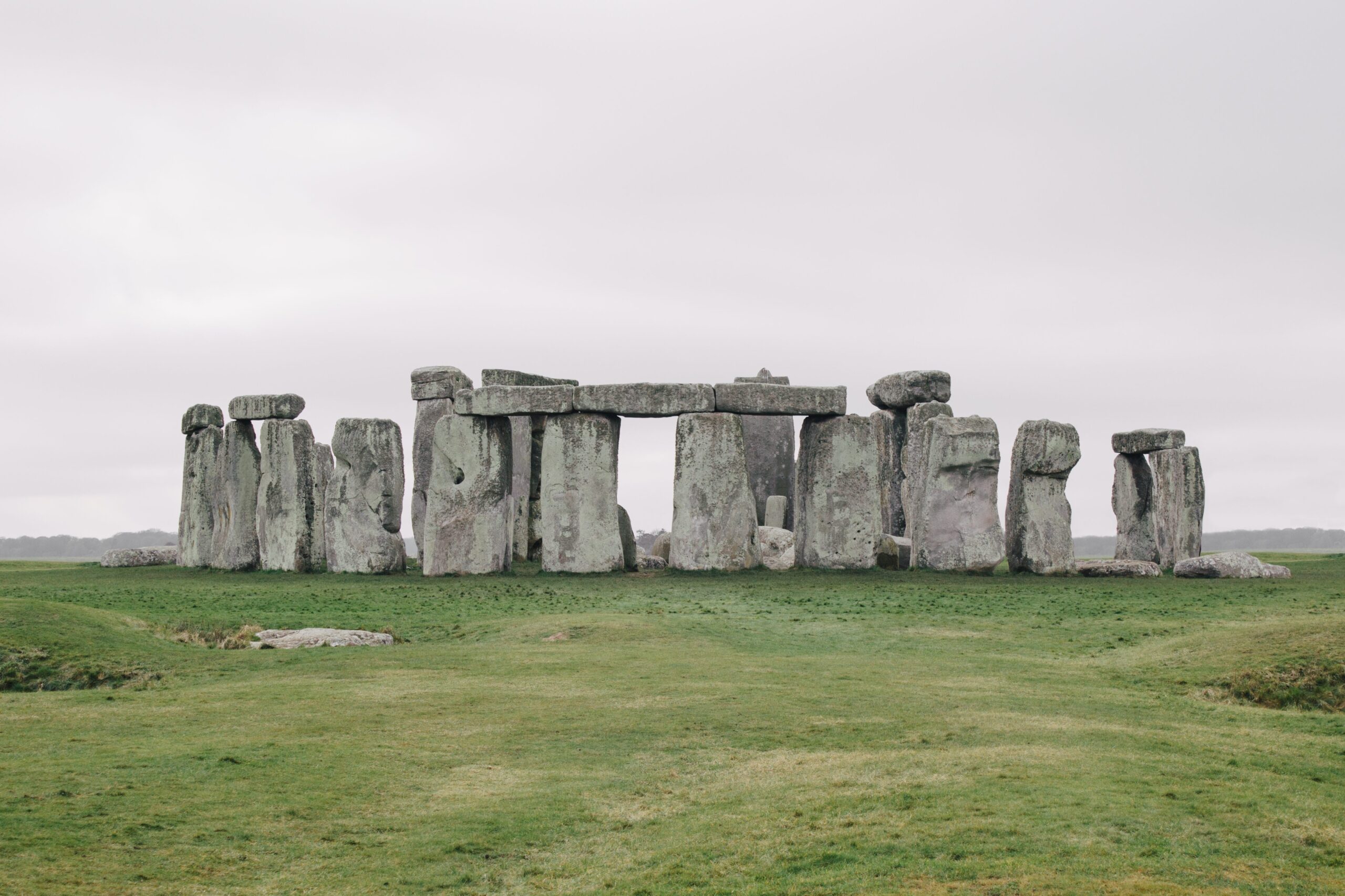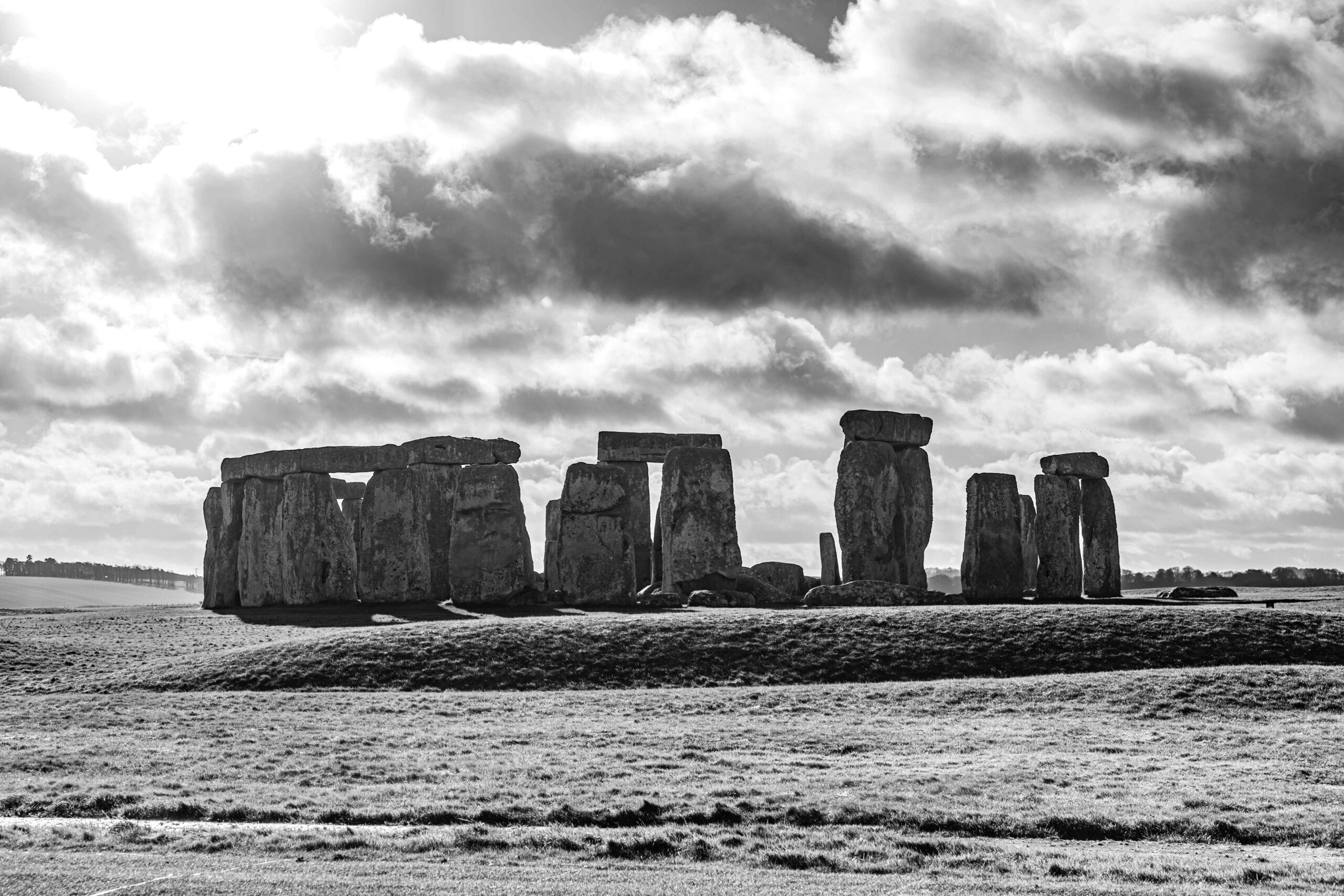Stonehenge is a prehistoric monument found on Salisbury Plain in Wiltshire, England, about 2 miles (3 km) northwest of Amesbury. It consists of a ring of sarsen standing stones weighing about 25 tons. Each standing about 13 feet (4 meters) high and seven feet (2.1 meters) wide, connected by horizontal lintels.
There is a ring of smaller bluestones inside. The trilithons are free-standing, while the sarsens are joined by a single lintel. The ruins of the entire monument face the summer solstice sunrise. There are several hundred tumuli (burial mounds) throughout the dense complex of Neolithic and Bronze Age monuments in England where the stones are set.
The construction of Stonehenge took place between 3000 BC and 2000 BC, according to archaeologists. The earliest phase of the monument is the circular earth bank and ditch surrounding it. It dates to around 3100 BC. Bluestones were first raised between 2400 and 2200 BC, although they may have existed as early as 3000 BC.
Stonehenge is one of the most famous landmarks in the United Kingdom and is considered a British cultural icon. Since 1882, when legislation to protect historic monuments was introduced in Britain, it is legally protected as a Scheduled Ancient Monument. The land surrounding Stonehenge is owned by the National Trust, but the Crown owns Stonehenge itself.

There is evidence that Stonehenge was a burial ground from its earliest days. Deposits of human bone date from as early as 3000 BC, when the ditch and bank were first dug, and continued for at least another 500 years.
Over the past century, Stonehenge has become a sort of symbol of Great Britain, the place where every decent tourist considers it a duty to take a picture against as proof of their visit.
The first time I saw Stonehenge, I was blown away. I felt a slight sense of perplexity at heart, despite the rapturous reverence and joy of seeing my childhood dream come true.
The only thing there is a pile of huge stones on the empty field and being quite remote from any settlements, but as long as you walk around the stones without touching them, there is such a large queue every day as if Merlin himself was performing magic tricks on Salisbury Plain.
It is only in the British Isles that archaeologists find 900 miniature Stonehenges, not to mention the countless amounts of prehistoric structures found in Europe and Asia. More importantly,
Stonehenge has been cloaked in mystery because it is simply the most grandiose and preserved monument of its time. As far as the enigma equals the attractiveness to most people, the endless streams of tourists flow into Salisbury Plain, perhaps hoping right there on the spot that it strikes their minds why about 4600 years ago someone made such titanic efforts to erect Stonehenge.

In the last few centuries, there have been a lot of different assumptions regarding who? how? and what? Stonehenge was built.
A few myths and theories surround Stonehenge:
- The druids built Stonehenge as a sacrifice temple for their gory rituals. The development of science and technology led to the discrediting of this vision. The Celts did not contribute to the construction of Stonehenge since they came to the British Isles later.
- The astronomical observatory of the Bronze Age, Stonehenge served as a solar and lunar calendar. However, there are some questions that arise: Why build such a labour-intensive calendar only to observe the Sun and the Lune? Why not leave marks on any surface instead?
- The Stonehenge model illustrates the ten-planet Solar System instead of the twelve.
- Around 250 burials were found at Stonehenge; some scientists suggest that it was the largest Neolithic cemetery and a resting place for the elite of the time.
- According to the supporters of this idea, the huge blocks would be brought from Wales to Salisbury Plain over a 200-mile route. Stonehenge is a so-called place of power, a source of healing energy, where people can feel an unimaginable surge of energy and get better from various illnesses. Evidence of this can be seen in the graves of people with obvious injuries, who made a pilgrimage to the cryptic place in hopes of getting cured of their illnesses.
- There is no greater or lesser significance to Stonehenge as a portal into parallel worlds. Stonehenge is often believed to have helped the druids escape to another dimension rather than being exterminated by the Roman legionaries.
- An alien civilization built Stonehenge as a message to mankind, which will be deciphered when mankind is ready for it.
- It is believed that the British Islands were once part of the sunken Atlantis. Stonehenge was one of many temples of the Cult of the Sun that was erected by the Atlantians, who could influence the wave nature of things.
- Due to a concentration of very strong magnetic and energetic channels across the Earth, Stonehenge is the landing site for alien spaceships, an original radar indicating their direction.
This theory is supported by the fact that the Stonehenge slabs are made of quartz. Megaliths are well known for their ability to emit radio waves, which makes them real radio transmitters. In the area of Stonehenge, magnetic anomalies, crop circles, and UFO sightings are quite frequent.
In addition to the hypothesis we’ve been advancing regarding Stonehenge, the site is becoming increasingly popular, resulting in a number of strange imitations. At the beginning of the 20th century, a replica of Stonehenge was built in Maryhill, Washington, which was actually an interpretation of Stonehenge in its prime, before it was destroyed by humans and time.
Nebraska, in America, has its own Carhendge, and perhaps, someday, someone will wonder why all those weird means of conveyance of the 20th century were amassed together. You can find out more about it by visiting stonehengevisit.co.uk


